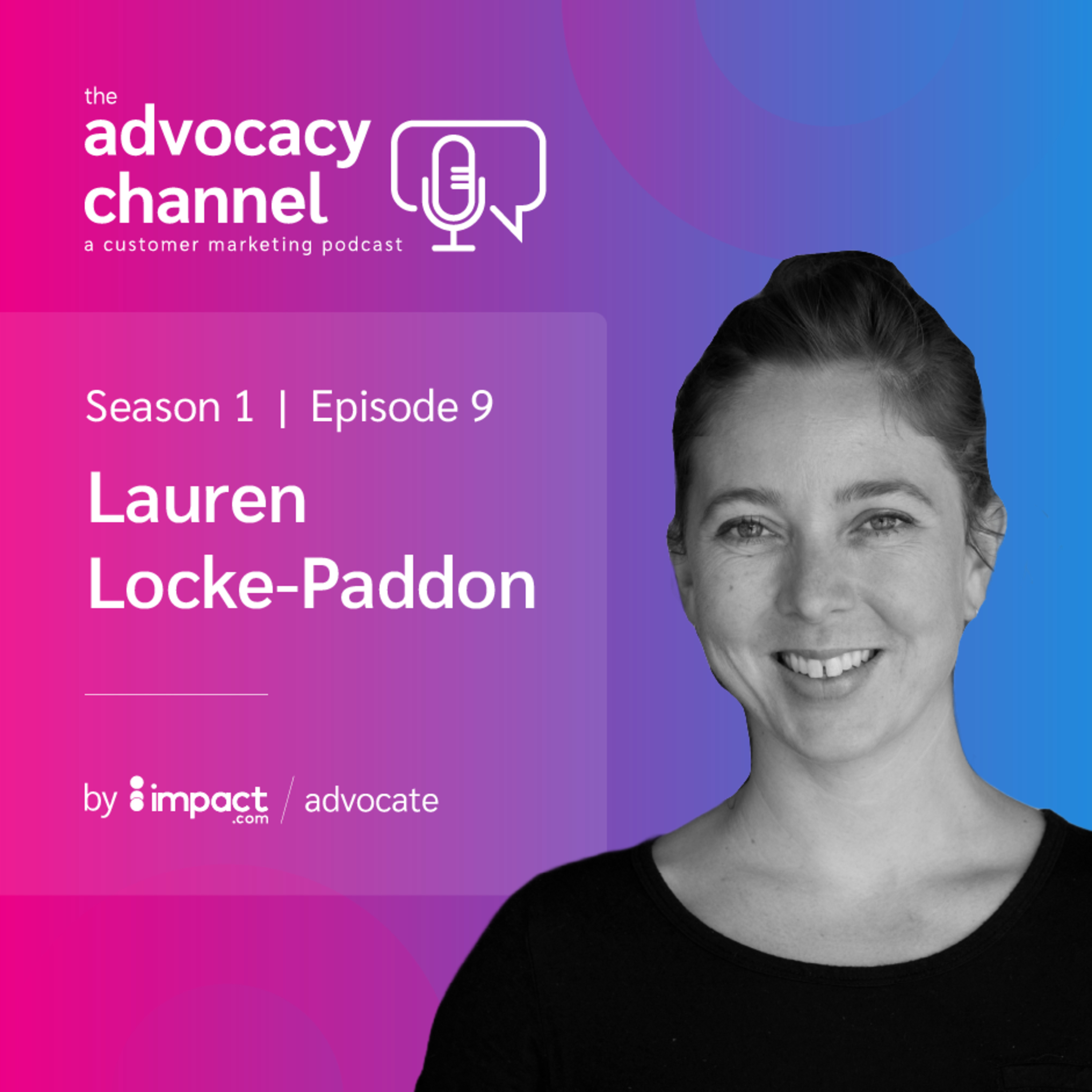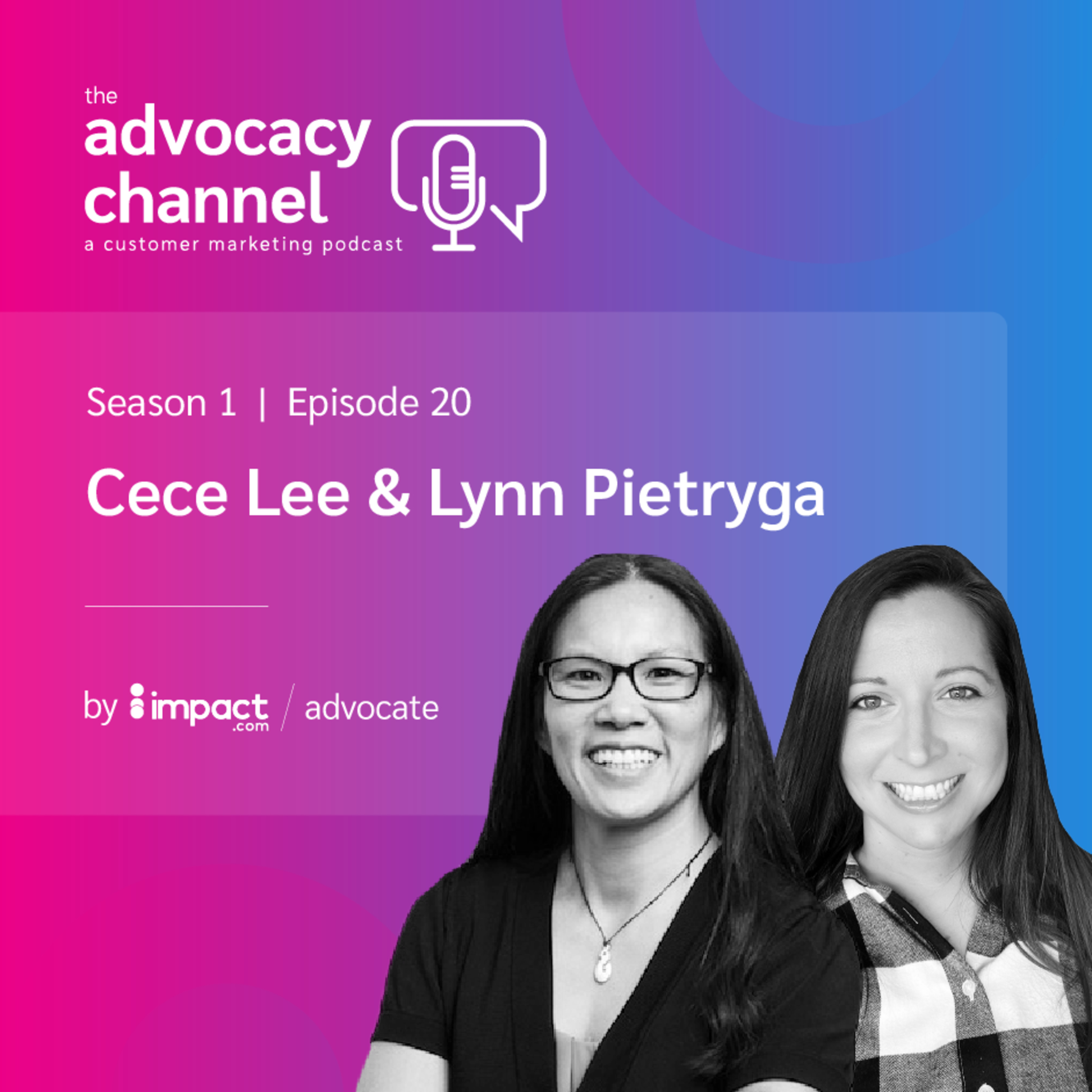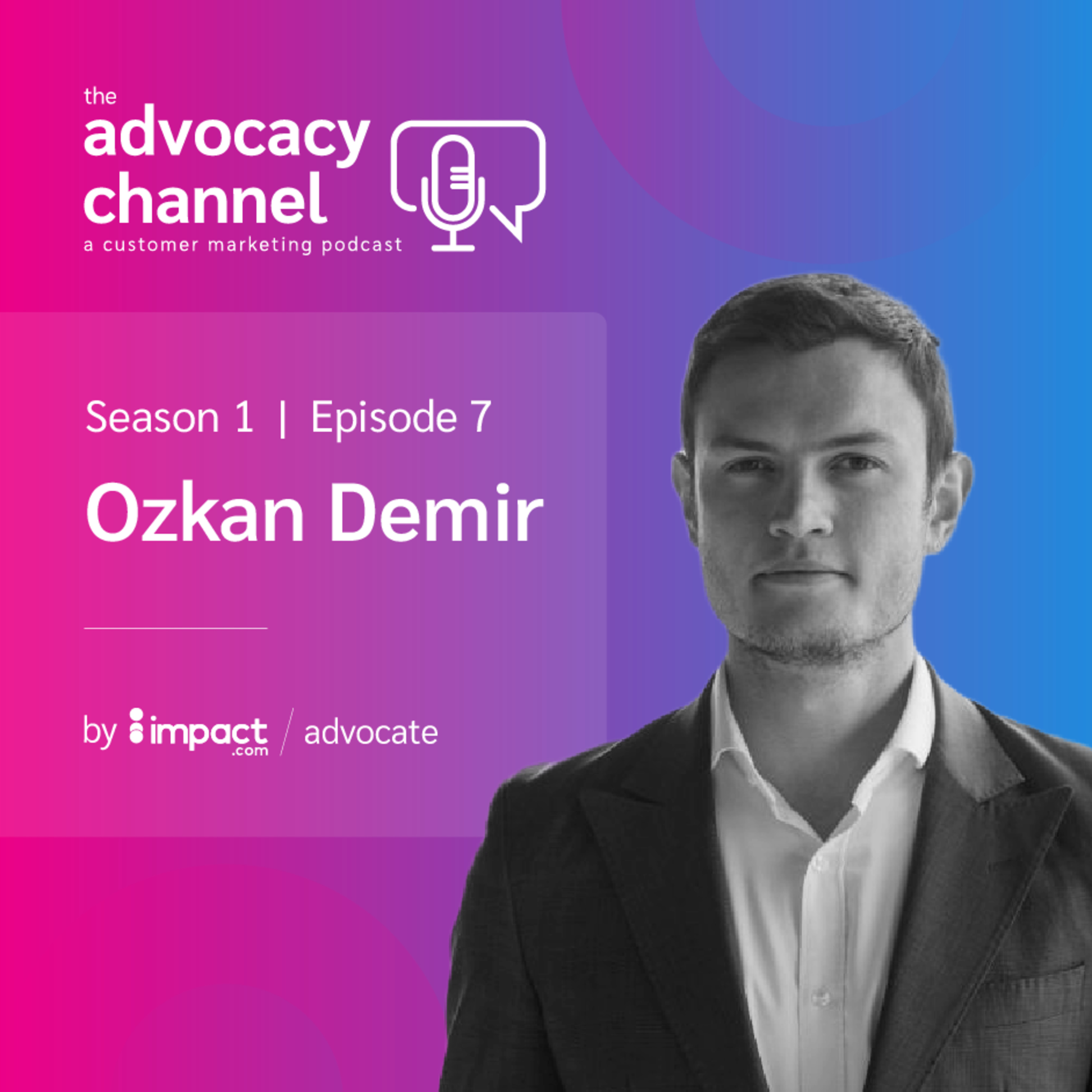Episode Transcript
Will Fraser: Hi Dana, thank you for joining us.
Dana Alvarenga: Thanks, I'm happy to be here. Thanks for having me.
Will: Maybe before we get into today's topic, can you give us background on Slab5 and what you're doing there?
Dana: Sure. I work at Slab5 as VP of Customer Experience. I actually was a prospect looking to bring in a customer voice tool for my NPS program at a former company and ended up working for them. I built everything post-sale - customer experience, success, onboarding, advocacy. What's really cool is my customers are customer marketers and advocacy professionals. Slab5 is a platform that helps customer marketers mobilize their customers to drive customer-led growth at scale. I manage our customer program, the Slab5 Rockstars, and our industry community, the Customer X community.
Will: You must have an interesting perspective on customer marketing and people's career paths, as well as all the different experiences they're having. Any key takeaways you're seeing in the customer marketing profession?
Dana: With customer marketing, it's about doing more with less and ensuring what you're doing isn't just checking boxes. It's aligning your customer marketing role with go-to-market initiatives and high-level executive goals. Being able to show we built this, influenced revenue, enabled customer-led growth and how it impacts revenue or expansion. Being able to communicate this to C-level executives is key for success in 2023 and beyond.
Will: I can only assume with current financial concerns that's more important than ever, right?
Dana: Exactly. 100% more important to prove your value and what customer marketing can do for an organization. It's not just reference calls or customer advisory boards. It's so much more. Bringing that to the surface is key.
Will: How does one do that? We've talked to many who say it's very hard or nearly impossible. But I don't quite buy that. What's your philosophy on successfully showing revenue influence?
Dana: It comes back to thinking about customer programs differently. Track customer engagement to avoid burnout and tie advocacy back to revenue through ongoing customer voice programs. The new way is about using authentic customer voice, not just logos on websites or happy quotes. It's about getting real customer feedback, good or bad. Customers trust others like them who speak about your business. Take off the marketing hat and put customers at the forefront.
Will: It's interesting you mention that marketing hat. We see this at Sasquatch and elsewhere - marketing doesn't want to put it out unless it's absolutely polished and perfect. What's your view? Is there a middle ground, or does authenticity have to look raw?
Dana: I think there's a middle ground and room for both. Ensure there's a two-way exchange of value where the spotlighted customer benefits. Yes, polished videos and case studies have their place, but it's also about making customers rock stars and elevating what they're doing. It doesn't matter where they work or their company logo - it's about what they're doing. This helps elevate customers in their career path and makes them great advocates, especially with job changes. It keeps the advocate close versus just focusing on their company logo.
Will: Do you find driving authentic connection builds better ongoing relationships versus just asking for quotes? Or is it onerous and people need more incentive?
Dana: It's about structure. That's part of my four-step process for building a customer program. First, plan and define what's in it for them. What do customers get from participating? Ask what they want to do. Make a list of advocacy activities and let customers select their interests. When opportunities arise for podcasts or speaking events, they've already raised their hand. This beats random advocacy requests, like rushing to find SKO speakers and calling the same customers repeatedly. You have a pool of willing participants. It's flipping the script on how it's positioned, starting with planning.
Will: That's a really good point. Many of us go to boardrooms and draw on whiteboards designing exactly what we want people to do, then try forcing them into our funnel instead of identifying what they want. They might even have ideas we hadn't considered. What are the pitfalls people run into during planning?
Dana: Not taking inventory of what you already have, especially if it's a new program or role. Low-hanging fruit is customers who've already helped you. Talk to product, talk to sales. Every department has a little black book where they call the same person for product feedback or references. Taking internal inventory versus starting from scratch makes it a company initiative. I once built the worst customer advisory board ever - product had thousands of users but we had two people. It was horrible because I didn't check who product was already working with. I learned that lesson the hard way.
Will: That's a good point. There's a little black book everywhere, right? And I've found people often think there's less in that black book than there actually is. When you look inside, suddenly there's 10 great customers we can include.
Dana: Right, and the big thing is building that relationship with Sales to release these names and contacts for your customer program. Let them know you'll track how often customers are asked for references or webinars to prevent burnout. It's about educating sales and building trust that you won't overuse their customers and make them unhappy.
Will: So if that's your first phase of your four-phase approach to customer marketing, what comes next after planning and what should we know?
Dana: That's all about executing. You've planned, have everything in place, done your internal roadshow and looked at internal resources. Now it's executing - have an official rollout launch, make it exciting. Get senior executives involved and following along because success comes from the top down. Have a content calendar of opportunities planned. Yes, ask customers what they want to do as part of the program, but if nothing happens for three months, you'll lose momentum. Have something planned, whether it's a webinar, peer networking, or design planning session.
Will: When trying to get executive alignment and sponsorship, what works and what doesn't?
Dana: What works is bringing them in at the beginning, during planning, and having that one executive sponsor as your ally to help get buy-in across the organization. The success comes from understanding their go-to-market initiatives - whether it's your CEO, CMO, Chief Customer Officer - and showing how your customer program aligns. If they're focused on driving renewals, retention, or launching new products, show how you'll help through things like product beta testing with program customers. Show actionable ideas for how you'll support their initiatives.
Will: I like that. When we include someone in planning stages and know where the goalposts are, it's easier to build that content calendar and remind them how activities like webinars support their objectives. I also like your advice about not just launching a program without ways to immediately engage early adopters. Sometimes identifying an excited adopter and creating engagement opportunities for them is key.
Dana: Yes, 100%.
Will: So we've got planning, execution - what comes next in your approach?
Dana: The ongoing management. It's not set it and forget it. You can't just launch the program and move on. If you build it, they will come - that's not true. Some customers will engage right away, but it needs nurturing. Survey program customers quarterly or annually to ensure you're offering the right opportunities. Include surprise and delight elements to thank them - not upfront bribes like "do this for a $25 gift card" but recognizing when they hit benchmarks. Manage engaged customers and reengage inactive ones. Work with customer success to understand what's missing or why customers aren't participating in activities they expressed interest in.
Will: That ongoing management piece is very important. I don't know who popularized "set it and forget it" around customer marketing initiatives, but if we ever get a time machine, maybe we can go back and remove that. There seems to be this mentality that we'll launch a program, it'll work amazingly on day one, and then we can move on to something else. I think that sometimes gets pushed down by executive teams who want to see people working on many different things. Have you had experience getting the concept fully adopted that this isn't a set it and forget it initiative?
Dana: Yes, it comes down to making customer marketing or your customer program a larger scope - not just sales reference fulfillment or writing case studies. Make it tie back to impact. Showing the impact of what the program can do is key.
Will: You probably have better stories than I do, but I've seen people who really nurture their customer marketing programs look like rock stars. When I dig into how they did so well, often the answer is that they nurtured relationships, thanked people, reminded them - all these nurture activities. Coming from technology companies, it's easy to say platforms will automate everything. They will help, but at the core, there needs to be human involvement in building that nurture. I just wish people would understand the power of that nurture more.
Dana: Yes, you're 100% right. It's about getting to know what's in it for them. Don't just build a customer program because the CEO said so. Survey customers, talk to them. Would they like to be asked periodically for reference calls or join peer networking or advisory boards? Ask them. Sometimes it's not always the right use case - it's not one size fits all for all companies and users. You have to do your homework.
Will: If there's one piece of advice we've heard on the show that people struggle to adopt, it's "ask the customer." Just go ask them and accept that your great idea may not be exactly what they're looking for. You said phase four was impact - can you help unpack that more for us?
Dana: Yes, with impact you want to track engagement from company level to advocate to specific activities. See what engagement you've had monthly or quarterly, what opportunities were influenced tied to expansion, renewal or closed deals. You can track this in many ways - spreadsheet, or with Slap5 you can use Salesforce integration for dashboards. But that doesn't happen overnight - people need to grow into these programs. Track how customer voice was used - one interview might get used in blogs, sales, social media. Track how many uses that got, carve it into snackable content. Know your numbers around customer voice helping overcome objections, capturing value stories that influence renewals. It's about the voice of the customer, not just quotes saying "Company XYZ works with you." Report on renewal size, campaign response time - all the data and numbers help show impact.
Will: You're saying maybe start with a spreadsheet, later use a tool like Slap5. Is there a line where someone should leave the spreadsheet? Is it when your hair's on fire, or are there other indicators?
Dana: Usually it's when it becomes unmanageable or stuck with just that customer marketer or department. Moving to a tool that connects to your CRM gets more visibility on the impact. It helps get sales bought in because they can see how advocacy activities influenced opportunities. Also measure program growth - track companies with one advocate versus multiple advocates, how many renewals had advocates. Start with baseline metrics, then move to tracking opportunities and renewals as you advance.
Will: I really like that simple measurement of companies with more than one advocate. In a world with so much career mobility, two advocates almost feels like one advocate from years ago. You get that nice wind of them hopefully bringing you to the next company, but losing your advocate inside a company may negatively impact retention numbers.
Dana: 100%, that's huge. With my customer program, if there's not more than one advocate, we at least have the advocate and a dotted line to their boss just in case of any movement. That's a huge one.
Will: Well, that sounds like a pretty clear approach, but everything's always harder in reality. Any advice for someone who says they're going to take this approach and run with it?
Dana: I would say again, talk to your customers, do that homework and ensure your advocacy activities - customer referrals, reference calls, content sharing with prospects - aren't just content for content's sake. Tie it back to go-to-market initiatives and what prospects or customers want to hear about. And pivot - try things out. If it's not working, change rather than let it fail for three to six months. You'll know right away if people aren't engaging or signing up, or if sales isn't using your content. Pivot.
Will: I like it. Now, this is all great for refreshes or new programs. But if someone's in the middle of something right now and can only take one piece of advice, what would you say? What's the one piece of advice all customer marketers need to be thinking about?
Dana: Go back to get in front of your senior level executives, find out this quarter's go-to-market initiatives, absorb that information and then show how you've already supported those initiatives with your customer program. Don't wait to be asked. Be assertive and do it.
Will: So almost like figure out where the goalpost is, then do forensic work to prove how much you've already impacted it to ensure good visibility and priority.
Dana: Exactly. CMOs or CEOs might ask for basic numbers like reference counts or advocate totals. But dig into how the program has influenced different things - maybe snackable content from design partner sessions or customer advisory boards. Show how customer-led growth is happening within your program. Bring that to the surface versus just static numbers. No one's going to ask for that - you need to bring it forward.
Will: I love that. As customer marketing gains more traction and visibility from the C-Suite, that's great advice for thinking about how we make ourselves heroes or at least leading characters in that story. Thank you for your time. If people want to connect with you or learn more, where can they find you?
Dana: They can connect with me on LinkedIn. If you're not part of the Customer X community on Slack, I'm happy to send an invite - just message me. We'll also have our fourth Customer X Con in October with about 200 customer marketing and advocacy professionals, so watch for details.
Will: Where will Customer X Con be happening this year?
Dana: In Boston, Massachusetts.
Will: Wonderful, always love a good time in Boston. Thank you very much for your time today, Dana. It's been a pleasure chatting and I look forward to having you back sometime soon.
Dana: Thank you very much. Thanks for having me.


